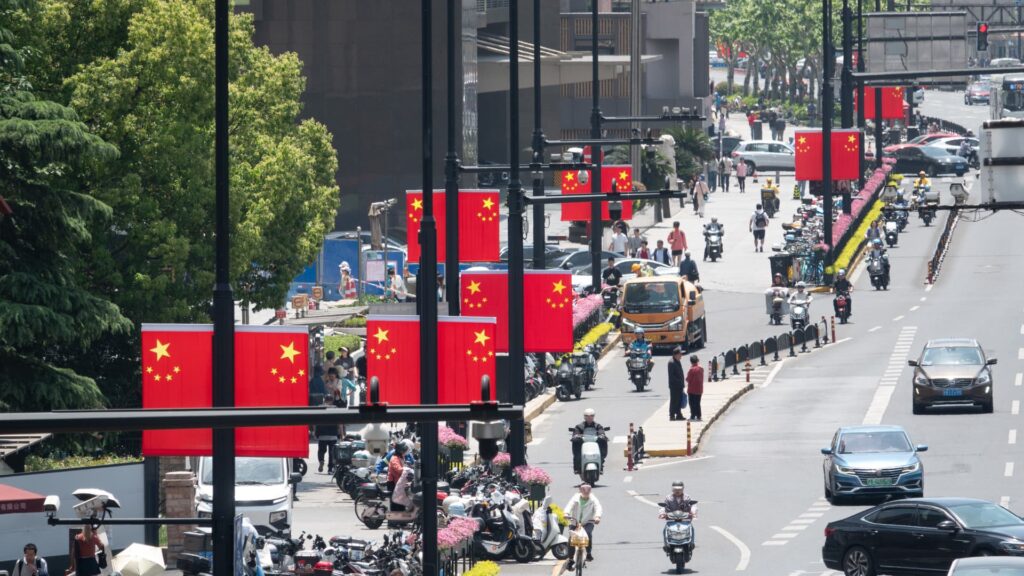SHANGHAI, CHINA – APRIL 29: Pedestrians walk by lampposts decorated with Chinese national flags prior to May Day holiday on April 29, 2025 in Shanghai, China. (Photo by Wang Gang/VCG via Getty Images)
Vcg | Visual China Group | Getty Images
Asia-Pacific markets traded mixed as investors assessed trade developments between the U.S. and countries in the region, with focus also on Asian currencies that reversed course to weaken Tuesday as the dollar appreciated.
India has reportedly proposed zero tariffs on steel, auto components and pharmaceuticals on a reciprocal basis and up to a certain amount of imports, while Malaysia said Monday that Washington had agreed for further talks and there could be a cut in tariffs.
Treasury Secretary Scott Bessent told CNBC Monday that the U.S. was “very close to some deals,” echoing comments from U.S. President Donald Trump a day earlier that there could be some agreements as early as this week.
China stocks resumed trading after the Labor Day holidays amid signs of Washington and Beijing taking a more conciliatory approach to resolving trade disputes after resorting to tit-for-tat tariffs.
Mainland China’s CSI 300 index climbed 1.01% to end the day at 3,808.54, its highest level since April 3. Meanwhile, Hong Kong’s Hang Seng Index added 0.7% to close at 22,662.71.
China’s Caixin services purchasing managers’ index came in at a seven-month low of 50.7 in April, compared to 51.9 in the previous month.
Over in India, the benchmark Nifty 50 fell 0.29% while the BSE Sensex moved down 0.22% in choppy trade as at 1.42 p.m. Indian Standard Time.
Australia’s S&P/ASX 200 benchmark ended the day flat at 8,151.40.
Japanese and South Korean markets are closed for public holidays.
U.S. stock futures fell as investors awaited the start of the Federal Reserve’s first policy meeting since U.S. President Donald Trump announced “reciprocal” tariffs in early April. The two-day policy meeting will begin on Tuesday stateside, with a rate decision expected Wednesday. Fed funds futures trading points to just a 2.7% chance of a rate cut, according to the CME Group’s FedWatch tool.
Erik Weisman, chief economist at MFS Investment Management, believes that Fed chair Jerome Powell is “all but certain to express a wait-and-see attitude” at the meeting.
“The chaos of U.S. tariff policy leaves the future macroeconomic landscape especially challenging to discern … given that the Fed just slowed the pace of QT [quantitative tightening], Powell is unlikely to feel the need to do anything more in this space in the near term,” he wrote in a Tuesday note.
Overnight stateside, stocks fell with the S&P 500 ending a nine-day rally as investors monitored the latest developments on global trade.
The broad-market index shed 0.64% to close at 5,650.38, while the Nasdaq Composite dipped 0.74% to end at 17,844.24. The Dow Jones Industrial Average dropped 98.60 points, or 0.24%, to settle at 41,218.83. The S&P 500 came into the session riding a nine-day winning streak, its longest since 2004.
— CNBC’s Pia Singh and Hakyung Kim contributed to this report.

